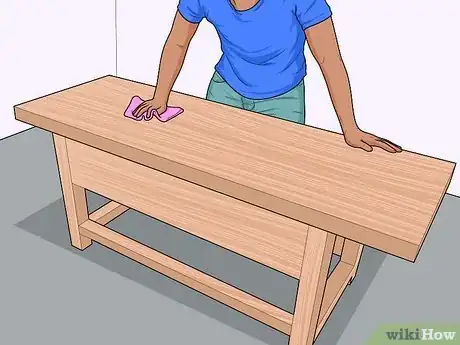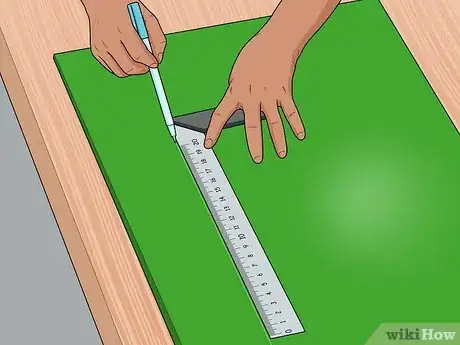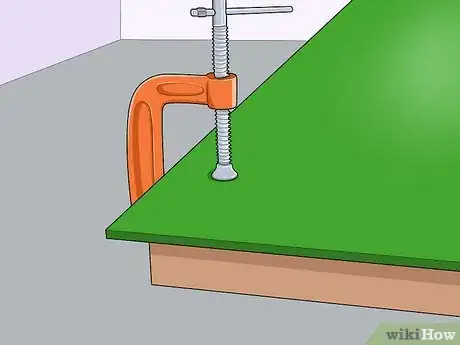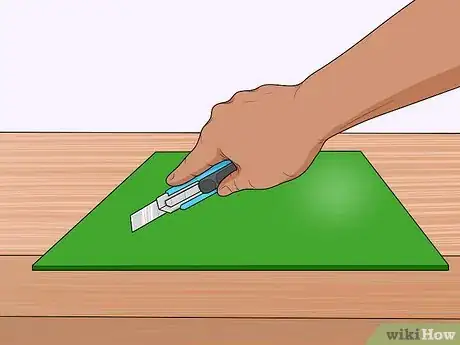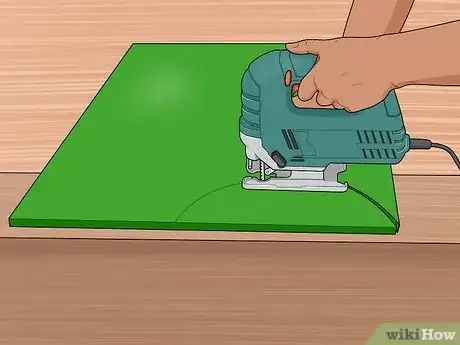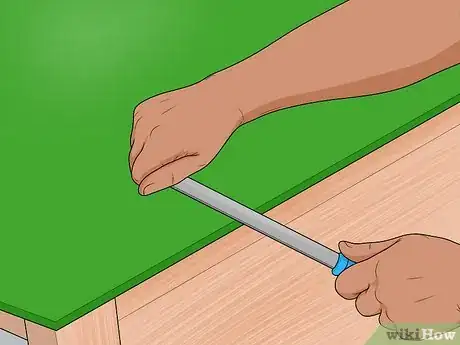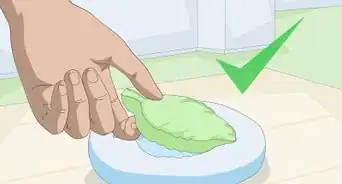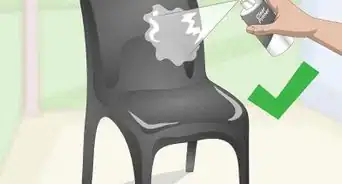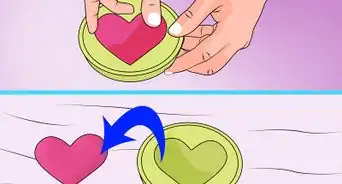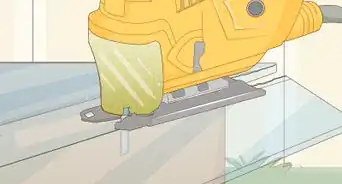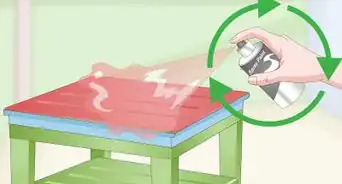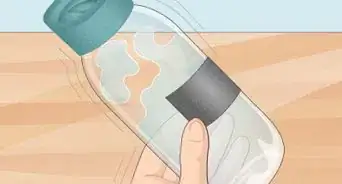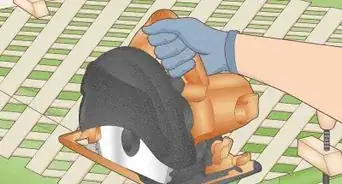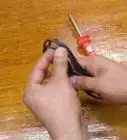This article was co-authored by Ryaan Tuttle and by wikiHow staff writer, Hunter Rising. Ryaan Tuttle is a Home Improvement Specialist and the CEO of Best Handyman, Inc. in Boston, Massachusetts. With over 17 years of experience, he specializes in building home service businesses, focusing on creating scalable and efficient brands. With the help of his global team, the companies have achieved over 10+ million in sales and received recognition through magazine features, and enjoy partnerships with wikiHow and Jobber field service software. Boston Magazine and LocalBest.com have named Best Handyman Boston the Best Handyman in Boston. Ryaan holds Construction Supervisor and Home Improvement Contractor Licenses.
There are 9 references cited in this article, which can be found at the bottom of the page.
This article has been viewed 46,203 times.
Acrylonitrile butadiene styrene, or ABS plastic, is a durable yet malleable material used in a variety of products, like computer keys and car interiors.[1] Whether you’re cutting out smaller sections from a larger piece or using the whole sheet for a project, cutting ABS at your home workstation can be easy with the right tools.
Steps
Preparing Your Workstation
-
1Clear your workbench surfaces of any debris or particles. A clean bench will help ensure the ABS maintains its integrity and look without getting metal or other debris embedded in it.[2] Wipe any dust or debris from the benchtop using a shop cloth.
- For a slightly deeper clean, use a mild household detergent along with a shop cloth.[3]
-
2Mark guidelines on the plastic for each cut on the smooth side. A sheet of ABS plastic will have a smooth side and a textured side. You’ll want to display the textured side since it is more resistant to scratches.[4] Mark the shapes that you are cutting out.
- Use a water-soluble marker so the marks can easily be wiped away with a damp cloth when you are finished.[5]
- If making straight cuts, use a ruler or straight-edge to guide the marks.
- For curved lines or circles, use a compass or protractor. You can also trace curved objects, like bowls or coffee cans to stay precise.
Advertisement -
3Clamp the ABS sheet down to your bench. Using a few hand clamps will help keep the plastic steady as you are making your cuts. Place the clamps near the edge you are about to cut for the least amount of movement.
- Use a flat board and clamp each end to the table to hold the entire sheet of plastic flat and to provide yourself with a straight-edge.[6]
Picking the Correct Tools
-
1Use blades meant for cutting plastic. Plastic-cutting blades have a higher tooth count than a standard wood-cutting blade.[7] This allows for a smoother cut without having jagged edges. It also helps prevent kickback if you’re using an electric saw. Ensure you’re using a blade meant for cutting plastic.
- Use a thicker blade so the plastic does not melt and stick back together.[8]
- Other alternatives include cutter tools or a grinder with a metal cutting blade.
-
2Use a craft knife to make smaller cuts. If you are trying to cut out smaller windows in larger sheets or making small handheld crafts, use a craft blade to chip away small bits of plastic.[9]
- Drill holes to use as starting points for the blade and shave away the plastic until you reach the guide lines.[10]
-
3Cut long, straight lines using a handheld circular saw and straight-edge. Clamp a piece of straight wood across the plastic with the line you intend to cut hanging slightly over the edge to cut a straight line. Guide the saw through the plastic sheet, keeping your hand on the wide portion of the saw shoe.[11]
-
4Create curved cuts by using a jigsaw. Jigsaws allow for better mobility as you make curved cuts into the plastic. Using a blade with 10 teeth per inch, turn the plastic to make the shapes you need.[12]
- Drill holes in the plastic along the guide lines so your blade has places to start and stop easily.[13]
- Make straight relief cuts from the outside of the plastic to the curves. This will help prevent the plastic from warping and shortens the cutting distance.
- Leave room between the guide lines you’ve drawn and where you cut. You can always file these down later.
-
5Make short, straight cuts using a Japanese-style pull saw. This type of saw makes cuts only when you pull it, unlike other hand saws that cut when you push and pull it.[14] A pull saw helps make a cleaner, smoother line in your plastic and may be easier for making shorter straight cuts than an electric saw.
- Use your thumb to guide the blade when you make the initial cut. From there, place the saw into the line you’ve made and pull the saw through.[15]
Working with the ABS Plastic
-
1Use a straight plank of wood as a guide. When making long cuts, clamp a straight piece of plywood to the plastic near the guidelines. If you’re using a circular saw, hold the saw shoe against the board to ensure the line you cut stays straight.[16]
-
2Cut just outside of the guide lines. Leave extra room between the guide lines and the cut you make. This added space will help guarantee that you do not cut too far into the shape you are trying to make and can always be filed down once you are finished.
-
3Smooth the edges with a fine-grit metal file. Remove any areas that seem bumpy or rigid by applying pressure to the side you are filing. Continue using the file until you reach the desired smoothness for the plastic.
- Use long, steady strokes to avoid heating and melting the plastic.[17]
Community Q&A
-
QuestionHow do you attach polycarbonate to steel beams?
 T. ChinsenTop AnswererE6000 is a clear industrial strength glue that works well in attaching two dissimilar materials. There are other compounds that can secure these materials but are not clear. Be aware that there may be some chemical reaction from the glue as it will contain solvent to keep it flowable. Check the adhesive package for its recommended usage.
T. ChinsenTop AnswererE6000 is a clear industrial strength glue that works well in attaching two dissimilar materials. There are other compounds that can secure these materials but are not clear. Be aware that there may be some chemical reaction from the glue as it will contain solvent to keep it flowable. Check the adhesive package for its recommended usage.
Warnings
- Be careful when using saws and machinery to avoid cuts and accidents.⧼thumbs_response⧽
References
- ↑ https://www.creativemechanisms.com/blog/everything-you-need-to-know-about-abs-plastic
- ↑ https://makezine.com/projects/abs-plastic-fantastic-desk-set/
- ↑ https://formaspace.com/articles/technology-innovations/how-to-clean-workbench-countertops/
- ↑ https://makezine.com/projects/abs-plastic-fantastic-desk-set/
- ↑ https://makezine.com/projects/abs-plastic-fantastic-desk-set/
- ↑ https://makezine.com/projects/abs-plastic-fantastic-desk-set/
- ↑ https://makezine.com/2017/04/07/choose-right-circular-saw-blade/
- ↑ https://makezine.com/projects/abs-plastic-fantastic-desk-set/
- ↑ https://www.youtube.com/watch?v=v7-Q1mBMzAg
- ↑ https://www.youtube.com/watch?v=v7-Q1mBMzAg
- ↑ https://www.familyhandyman.com/project/how-to-use-a-circular-saw-long-cuts/
- ↑ https://www.familyhandyman.com/tools/woodworking-tools/how-to-use-a-jigsaw/view-all/
- ↑ https://www.familyhandyman.com/tools/woodworking-tools/how-to-use-a-jigsaw/view-all/
- ↑ http://www.finehomebuilding.com/2011/11/10/use-a-pull-saw
- ↑ http://www.finehomebuilding.com/2011/11/10/use-a-pull-saw
- ↑ https://makezine.com/projects/abs-plastic-fantastic-desk-set/
- ↑ https://www.youtube.com/watch?v=v7-Q1mBMzAg
